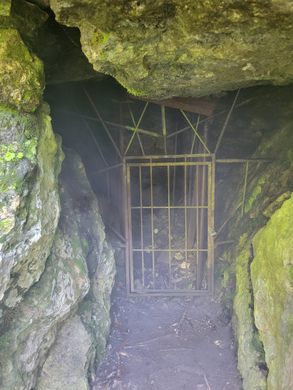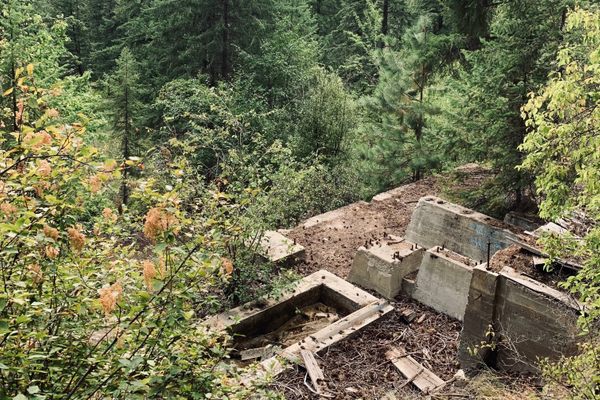AO Edited
Ice Cave of Bixby State Preserve
Chilly air billows out from the entrance of an abandoned mine on a steep hillside, providing a refuge for Ice Age fauna and flora.
On a hot summer day, the ice cave at Bixby State Preserve in northeastern Iowa keeps its cool. Chilly air billows out of the cave mouth, once the entrance to a now-abandoned mine, courtesy of nature’s air conditioning. A rare combination of geological features at the site has allowed Ice Age flora and fauna to survive here for tens of thousands of years.
Over the millennia, water has eroded Bixby’s limestone, creating deeply-incised ravines, steep hillsides, sinkholes, and numerous smaller fractures in the rock. The “ice cave” gets its name from reserves of ice, deep inside the slope, that build up over the winter as water drips down into limestone’s many cracks and crevices. Air chilled by the ice seeps out through “ice vents” in the rocks. On north-facing hillsides that don’t receive direct sun, this phenomenon creates a microclimate that can be 40 degrees cooler than the ambient air in summer. The chill setting creates a refuge for plants and small animals that have lived in the area since at least the end of last Ice Age, nearly 20,000 years ago.
While the system that regulates the ice cave’s air flow is natural, the cave itself is partly artificial. Records are spotty—even Iowa’s Department of Natural Resources, which manages the site, isn’t sure about its past—but, more than a century ago, miners apparently enlarged a natural crack in the limestone to create the cave mouth we see today. Some sources say the passage extends about 80 feet into the hillside, but it’s unclear what, if anything, was ever mined there. The subterranean portion, now behind a metal barrier, is off-limits to would-be explorers.
Bixby earned its claim to scientific fame in the 1970s, when snail expert Allen Solum found a small population of Iowa Pleistocene snails (Discus macclintocki) present near the ice cave. While a tiny snail may not seem like a big deal, the animal was thought to be extinct for thousands of years: It’s one of the Ice Age-era species that persists at Bixby thanks to the microclimate created by the ice vents.
The snails, which are endangered, and several of the plants and other small animals on Bixby’s steep slopes are extremely fragile. Visitors must stay on established paths when visiting the preserve. Don’t go hunting for the snails, either. They’re hard to spot and, quite frankly, not much to look at. Just a quarter-inch in diameter, the dull-colored snails also lay their eggs on leaf litter. Just one footstep can wipe out an entire population.
The ice cave isn’t the only reason to visit the 184-acre preserve. Bixby State Preserve includes a trout stream, small picnic area, and a few quiet, pleasant trails. The preserve exists thanks to late-19th century local R. J. Bixby, who recognized the area’s natural beauty and began buying parcels to protect it from development.
Know Before You Go
Bixby State Preserve is about two miles north of the small community of Edgewood, Iowa, and accessed via a gravel road that is not maintained in winter. Access to the preserve is 24/7, but visitors should not attempt to cross Bear Creek when the water is high.
To visit the ice cave, park near the small picnic area just east of where the creek runs over the road. Walk east on a dirt trail, crossing the creek (do not attempt if water is running high), for about 200 feet. Follow stairs cut into the hillside to reach the cave entrance. Stay on trails at all times to avoid damaging the fragile flora and fauna present.

























Follow us on Twitter to get the latest on the world's hidden wonders.
Like us on Facebook to get the latest on the world's hidden wonders.
Follow us on Twitter Like us on Facebook